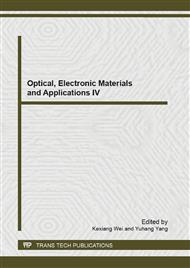p.397
p.402
p.406
p.410
p.415
p.420
p.424
p.428
p.433
Numerical Integration Combined Gaussian Quadrature with Shuffled Frog Leaping Algorithm in Manufacturing Engineering
Abstract:
Several numerical integral error results of Gaussian Quadrature based on subdividing the integral interval arbitrarily is presented, and then an approach for solving numerical integration based on Gaussian Quadrature and Shuffled Frog Leaping Algorithm (SFLA) in Manufacturing Engineering is proposed. SFLA is used to optimize the points in the integral interval in order to get a more precise result with using Gaussian Quadrature in every small segment. Simulation examples of integral validate the algorithm that can compute both singularity functions integral.
Info:
Periodical:
Pages:
415-419
Citation:
Online since:
July 2013
Authors:
Price:
Сopyright:
© 2013 Trans Tech Publications Ltd. All Rights Reserved
Share:
Citation:


